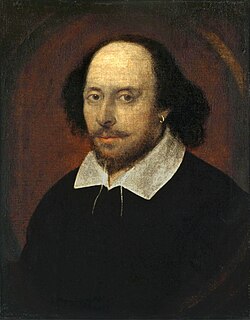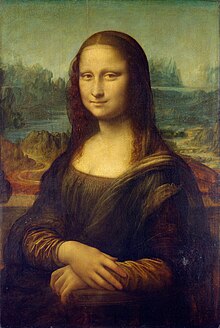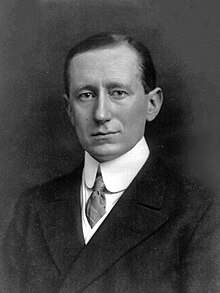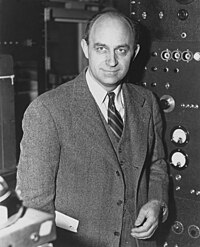Italophilia: Difference between revisions
added Columbus, Amerigo Vespucci, Marco Polo, Sebastiano Caboto.....incredibly forgotten.... |
No edit summary |
||
| Line 123: | Line 123: | ||
In automobile design, the brand names [[Ferrari]], [[Lamborghini]] and [[Maserati]] are well known and admired throughout the world. Ferrari road cars are generally seen as a symbol of speed, luxury and wealth all over the world and often are identified with Italy and [[Italian design]]: there are many thousands of Ferrari fans in the world, who often are even declared italophiles. |
In automobile design, the brand names [[Ferrari]], [[Lamborghini]] and [[Maserati]] are well known and admired throughout the world. Ferrari road cars are generally seen as a symbol of speed, luxury and wealth all over the world and often are identified with Italy and [[Italian design]]: there are many thousands of Ferrari fans in the world, who often are even declared italophiles. |
||
Italy is often admired for his [[Italian cuisine|cuisine]]: [[pizza]], [[spaghetti]], [[lasagna]], [[tortellini]], [[Italian wines]], [[tiramisu]], [[gorgonzola]], [[gelato]], espresso]], etc.. are appreciated all over the world. |
Italy is often admired for his [[Italian cuisine|cuisine]]: [[pizza]], [[spaghetti]], [[lasagna]], [[tortellini]], [[Italian wines]], [[tiramisu]], [[gorgonzola]], [[gelato]], [[espresso]], etc.. are appreciated all over the world. |
||
Italy ranks among the world’s most popular tourist destinations, with about 45 million tourists visiting the country every year. Italy has forty-seven [[UNESCO World Heritage Sites]], more than any other country. It is also home to a large number of religious sites that draw people from all parts of the world, many of whom view Italy as the wellspring of their Catholic faith. |
Italy ranks among the world’s most popular tourist destinations, with about 45 million tourists visiting the country every year. Italy has forty-seven [[UNESCO World Heritage Sites]], more than any other country. It is also home to a large number of religious sites that draw people from all parts of the world, many of whom view Italy as the wellspring of their Catholic faith (that is centered in the [[Vatican]], located inside the metropolitan area of [[Rome]]). |
||
The descendants of Italian immigrants to the countries of North and South America, in many cases, still retain a very great appreciation of their Italian roots, culture and traditions. Italophilia is actively fostered by organizations such as the [[Order Sons of Italy in America]], the [[National Italian American Foundation]], the [[Dante Alighieri Society]] and the Italic Institute of America.<ref>http://www.italic.org</ref> |
The descendants of Italian immigrants to the countries of North and South America, in many cases, still retain a very great appreciation of their Italian roots, culture and traditions. Italophilia is actively fostered by organizations such as the [[Order Sons of Italy in America]], the [[National Italian American Foundation]], the [[Dante Alighieri Society]] and the Italic Institute of America.<ref>http://www.italic.org</ref> |
||
Revision as of 23:49, 7 January 2015

Italophilia is the admiration, general appreciation or love of Italy, its culture, society, arts and/or people. It is often expressed by the emulation of Italy's ideals and civilization. Its opposite is Italophobia.
Italophilia in history
The extent to which Italic civilization has shaped Western civilization and, by extension, the civilization of the whole world, is widely recognized and acknowledged. Appreciation of the legacy of Italic ideals, civilization and culture has existed for many centuries, into the present day.
Roman era

Rome was the center of an empire that stretched across a large segment of the then-known world, and later became the center of the Christian faith. Roman civilization was transplanted to most parts of Europe, the Mediterranean basin and the Near East in the form of law, architecture, engineering, roads, aqueducts, public baths, sanitation, trade, literature, art, libraries, hospitals and agriculture.[1] It was possible for the people in the provinces to attain Roman citizenship, rise to the Senate, and even to become Roman emperor. The Roman provinces, having received much of the benefit of Roman civilization, became Romanized to a large degree. Winston Churchill states:[2]
- For nearly 300 years Britain, reconciled to the Roman system, enjoyed in many respects the happiest, most comfortable, and most enlightened times its inhabitants have ever had.
The Christian religion was viewed in Rome as contrary to prevailing religious and political beliefs and, consequently, was suppressed. Many Christians in Rome and elsewhere were persecuted. After the conversion of the Emperor Constantine to Christianity in 312 AD, Christianity flourished and became an integral part of Roman life. Roman Catholicism, in a form easily recognizable today, emerged and took root in Rome and much of the Roman Empire. The Church adopted many religious customs and forms common in pre-Christian Rome, such as the stole and other vestments, the use of incense and holy water in purifications, burning candles before the altar, the veneration of saints, the architecture of the basilica, the law of Rome as a basis for canon law, the title Pontifex Maximus for the Pope, and Latin as the language of Catholic ritual.
After the fall of the Roman Empire, its vast governmental network provided a structure for the Church’s ecclesiastic rule. The bishops, rather than the Roman prefects became the source of order and the seat of power.[3] In many important ways, the Roman Catholic Church became the successor of the Roman Empire. The Church and its Pope were major stabilizing influences in Europe in the centuries that followed. In the words of historian Will Durant (in his Caesar and Christ, The Story of Civilization):
- Rome died in giving birth to the Church; the Church matured by inheriting and accepting the responsibilities of Rome.
The cultural patrimony of Roman literature, architecture and sculpture inspired many of the achievements of the Middle Ages and Renaissance in Italy and the rest of Europe. Works by poets, authors and historians, such as Ovid, Horace, Catullus, Cicero, Virgil, Livy and Tacitus had a far reaching impact on the Western world.
The legacy of Rome is apparent in the Western world, and elsewhere, in numerous ways, such as:
- The Roman alphabet
- Roman numerals
- Names of the planets
- Names of the months
- Names of the days of the week (in Romance-language countries)
- Julian Calendar (used for almost 1500 years)
- Systems of government and law based on Roman models
- Latin-derived languages in Italy, France, Spain, Portugal and Romania
- Languages heavily influenced by Latin, such as English (approximately 55% Latin based)
- The Roman arch
- Techniques used in building roads, bridges, aqueducts, viaducts, etc.
- Use of concrete as a building material
- The stadium
- Wine-making cultures in Italy, France, Spain, Portugal, Austria and Southern Germany
- Creation of political-administrative entities like "Italia", "Hispania", "Britannia", etc...
Medieval period
After the fall of the Roman Empire, the civilization of Italy continued to be a cultural force that helped preserve Greco-Roman civilization and ideals. Latin, the indigenous language of the Italic people, became the universal language of the Catholic Church and, generally, of culture and learning in Europe.
Western Monasticism, as first practiced by the followers of Saint Benedict, born in Nursia in 480 AD, spread from Italy to all parts of Europe. The Benedictine monks were a very important factor in preserving Greco-Roman culture and learning for later centuries.
Saint Francis of Assisi (born Giovanni di Bernardone in Assisi in 1181) was a friar who founded the men's Order of Friars Minor and the women’s Order of St. Clare, both of which attracted many followers from all over Europe. He became one of the most venerated religious figures in Catholic Church history.
Saint Thomas Aquinas, a Dominican priest born in Aquino in 1225, was an influential philosopher and theologian. He was one of the greatest minds of the Middle Ages, and his influence on Western thought was immense. He was considered then, as he is now, to be the greatest theologian and philosopher of the Catholic Church. He is best known for his monumental work, the Summa Theologica.
Gregorian Chant, an outgrowth of Roman plain chant, strongly influenced both liturgical and secular music during the Middle Ages. An Italian monk, Guido of Arezzo, developed the form of musical notation that became the basis of Western music and, subsequently, of music worldwide.
Educated people in Europe were familiar with the works of Dante and Boccaccio, which dominated the literature of the Middle Ages, and with their contemporary Petrarch, who had established the most important lyric poetry tradition in Europe. These works had a great influence on Shakespeare, Chaucer and many other writers of the Middle Ages and Renaissance.

Students and scholars came from all over Europe to study at institutions of higher learning in Italy. The University of Bologna, the first modern university, was founded in Bologna in 1088. The University of Padua, the second oldest university in Italy, was founded in 1222 as a school of law. The University of Naples, founded in 1224, was the world's first state-supported university. The Medical School at Salerno, founded in the ninth century, was the world's first medical school, and unrivalled in the Middle Ages.
During the Middle Ages, the vitality of Italian merchants was evident throughout Europe, and the resultant trade prompted their invention of financial and business practices which provided the foundation for modern banking, commerce and capitalism.[4] The original banks were "merchant banks" that Italian grain merchants first invented in the Middle Ages. Merchants and bankers grew in stature based on the strength of the Lombard plains cereal crops, and capitalism evolved based on these banks.
Indeed banking (from the Italian word for "bench") can be traced to medieval and early Renaissance Italy, to the rich cities in the north such as Florence, Venice and Genoa. The Bardi and Peruzzi families dominated banking in 14th century Florence, establishing branches in many other parts of Europe.[5] Perhaps the most famous Italian bank was the Medici bank, established by Giovanni Medici in 1397.[6] The development of banking spread from northern Italy through Europe during the early Renaissance. Luca Pacioli is referred to as the "Father of Accounting"[7]
The Renaissance
The Italian Renaissance was to a large extent an expression of humanism, and led to one of the most productive and significant periods in human history in the arts, literature, medicine and science.
Giotto, born in 1267, was recognized as the first great artistic genius of the Italian Renaissance. His ability to portray human emotions distinguished him from the artists of the Middle Ages, and he established a style of painting that would be widely emulated in Italy and, later, elsewhere in Europe. Italian Renaissance painters and sculptors, such as Leonardo da Vinci and Michelangelo Buonarroti, and scores of others of the first rank, were greatly admired and acclaimed, and had a widespread influence on artistic concepts and esthetic standards throughout Europe.


Leonardo, born in 1452 in Vinci, was a painter, sculptor, architect, musician, mathematician, engineer, inventor, anatomist, geologist, cartographer, botanist, and writer. His genius, perhaps more than that of any of his contemporaries, epitomized the creative energy of the Renaissance. He is widely considered to be one of the greatest painters of all time, and his Mona Lisa is regarded by many to be the most famous painting in the world, and probably the most valuable.[8] His anatomical drawings have never been surpassed in detail and accuracy, and are still used today. Some of the mechanisms he invented are used in present-day robotic systems.
Michelangelo was born in Florence in 1475 and, like Leonardo, was a true Renaissance man. He was a sculptor, painter, architect, poet, and engineer who exerted an unparalleled influence on the development of Western art. He was considered the greatest living artist in his lifetime and, since then, one of the greatest artists of all time. His two best-known sculptures, the Pietà and David, are famous throughout the world. Michelangelo also created two of the most famous and influential frescoes in the history of Western art: the scenes from Genesis covering the ceiling of the Sistine Chapel, and The Last Judgment on the altar wall of the Chapel.
Italian singers, composers, dancers and actors had a great impact on music and the performing arts. Palestrina, Monteverdi and Frescobaldi were responsible for musical innovations that were seminal in the development of Western music. Italian Commedia dell'arte was an art form that had a great influence in the performing arts, not only in Italy but in many other parts of Europe as well.
The flourishing of arts in England during the Hanover dynasty attracted many Italian artists and musicians to the country. William Shakespeare is said to have exhibited Italophilia in his many works with an Italian setting, such as Romeo and Juliet and The Merchant of Venice. Spenser was greatly influenced by Italian epic poems. Francis I, king of France, initiated the French Renaissance by attracting many Italian artists, including Leonardo da Vinci, to his court. French theatre of the 17th century was rooted in the theatre of 16th-century Italy. Poland was strongly influenced by Italian artisans, painters, sculptors and architects, such as the sculptor, Giammaria Mosca,[9] whose many commissions included the tomb of the king of Poland. The Spanish writer, Cervantes, was greatly influenced by Italian literature, which is readily discernible in his own works. Spanish theatre of the 17th century was strongly influenced by Italian models.
Italy always was a center of commerce in the Mediterranean sea and Italian merchants and navigators -like the venetian Marco Polo- moved all around the known world with the Italian maritime republics, until a Genoese named Cristoforo Colombo discovered America in 1492, changing forever world history. One venetian navigator, Amerigo Vespucci, gave name to the new world just discovered. They were followed by other navigators, like the neapolitan Sebastiano Caboto.
Age of Enlightenment
Beginning in the 16th century, Italian states came under the political control of more powerful European monarchies; however, Italian remained the language of European intellectuals, and Italy continued to be a source of great creative energy in art, science, music and medicine.
Galileo, born in 1564 in Pisa, was the most famous scientist of his age, and played a major role in the Scientific Revolution. He is often referred to as the “Father of Modern Science.” His achievements include a greatly improved telescope, which he employed in making astronomical observations supporting the heliocentric theory of Copernicus; and also the experiments he carried out leading to his law of falling bodies, which was of key importance in Newton’s synthesis of his own famous three laws of motion.

Alessandro Volta, born in Como in 1745, invented the first true electrical battery, known as the voltaic pile. It provided a continuous source of electrical current, which greatly benefitted Ampere, Ohm and other electrical experimenters in their development of basic electrical theory. A unit of electricity (volt) is named in his honor.
Opera originated in Italy at the end of the 16th century (with the opera Dafne, which was composed by Jacopo Peri, and produced in Florence in 1598), and soon spread to the rest of Europe. Italian opera was adapted by French, German and Russian composers, who developed their own national schools of opera.
Italian instrumental music was studied and emulated all over Europe. The sonata, concerto, sinfonia, oratorio and other musical forms all originated in Italy. Italian terminology defining the tempo and mood of a musical passage was universally adopted in Western music. The music of Italian composers, such as Corelli, Scarlatti, and Vivaldi, was studied or transcribed by many other composers of the day, most notably Bach. In addition, many composers, such as Handel, Gluck and Mozart studied or worked in Italy, and subsequently became famous for their instrumental music and operas.
The Fortepiano, the fore-runner of the modern Piano, was invented by Bartolomeo Cristofori in Florence around 1725, and soon replaced the harpsichord as a solo and ensemble keyboard instrument.
The family of stringed instruments, consisting of the violin, viola, cello and contrabass evolved in Italy in the mid 16th century. Antonio Stradivari, Andrea Guarneri, Nicolo Amati and other Italian master instrument makers crafted stringed instruments that were highly prized, widely imitated, but never equaled.
The education of upper-class young man was expected to be completed by a "grand tour" of Italy to be exposed to the visible legacies of its classical culture, as well as to its contemporary culture of music, literature, art and architecture. Famous examples included Goethe, Keats, Lord Byron and Shelley. Many nobles and royals of the time visited Italy as a part of their education. Keats said that the country was a "paradise of exiles”.[10] John Ruskin was a Victorian Italophile who respected the concepts of morality held in Italy.[11]
Italian universities and medical schools attracted students and scholars from across Europe. Luminaries, such as Copernicus and William Harvey, were educated in Italy.
At the end of the eighteenth century, Italiophilia was not uncommon among the founders of the United States, and some of the creators of the U.S. Constitution, such as Thomas Jefferson and Benjamin Franklin, looked to Roman models upon which to base the American systems of government and law. Jefferson was among the most conspicuous of the early American Italophiles. He was especially impressed with Italian architecture, and based the design of his Virginia residence, Monticello, on prints by Palladio, the 16th-century Italian architect.[12] The Jefferson Memorial in Washington DC, erected in honor of Jefferson, is a neo-Palladian imitation of the Pantheon in Rome. The Palladian style of architecture appears elsewhere in the U.S. Capital, and the White House itself was inspired by it. (Congressional Resolution n. 259 of 6 December 2010 recognized Palladio as Father of American Architecture.)
The influence of Italian culture and artistry during this era is expressed by Barzini:[13]
- Italian architects and masons built part of the Kremlin in Moscow, and the Winter Palace in Leningrad. Italian artists embellished the Capital in Washington. They have strewn churches, princely palaces and stately villas all over Catholic Europe, especially in Vienna, Madrid, Prague and Warsaw. Their influence on architecture was felt almost everywhere. They taught poetry, statesmanship and trade to the English; military art to the Germans; cuisine to the French; acting and ballet to the Russians; and music to everyone.
Modern era

In 1861 Italy was united for the first time since the fall of the Roman Empire and became a modern industrialized country, where the tradition of creativity, scientific achievement and excellence in manufacturing continued.

Giuseppe Garibaldi was a central figure in the military campaigns leading to Italian independence. He was called the "Hero of Two Worlds" because of his military enterprises to achieve independence for countries in South America as well as Italy. Garibaldi was much admired by many of the greatest intellectuals of his time, such as Victor Hugo, Alexandre Dumas, and George Sand.
Maria Montessori, born in 1870, was a physician and educator who became known around the world for the educational method that bears her name, and for her writings on pedagogy. Her methods are in use today in schools throughout the world.
In the early 20th century Pirandello, a Nobel Laureate, was the first European playwright to radically question the structures of traditional theatre. Since then, film directors and writers such as Fellini, Antonioni, Pasolini, Calvino, Eco and Fo have been recognized around the world. Italian neorealism in films, beginning after the second world war, had a great impact on audiences around the world, and established a new philosophy of filmmaking adapted worldwide.

There is a worldwide recognition and appreciation of the legacy of the Italian scientists Fermi (nuclear power), Meucci (telephone), and Marconi (radio), whose discoveries and inventions transformed the world. Indeed Italian companies developed many products that are fundamental to western technological civilization: for example, Olivetti developed some of the first transistorized mainframe computer systems and in 1965 created the first commercial desktop computer (invented by the Italian engineer Pier Giorgio Perotto).
Today, Italy is admired throughout the world for its design, particularly in the areas of fashion and manufactured goods. Italian fashion is emulated all over the world. Brands such as Gucci and Benetton are imitated by milliners from China to Latin America. There is a world market for products from major Italian fashion houses, such as Armani, Valentino, Prada, Dolce & Gabbana, Ferragamo and Versace.
In automobile design, the brand names Ferrari, Lamborghini and Maserati are well known and admired throughout the world. Ferrari road cars are generally seen as a symbol of speed, luxury and wealth all over the world and often are identified with Italy and Italian design: there are many thousands of Ferrari fans in the world, who often are even declared italophiles.
Italy is often admired for his cuisine: pizza, spaghetti, lasagna, tortellini, Italian wines, tiramisu, gorgonzola, gelato, espresso, etc.. are appreciated all over the world.
Italy ranks among the world’s most popular tourist destinations, with about 45 million tourists visiting the country every year. Italy has forty-seven UNESCO World Heritage Sites, more than any other country. It is also home to a large number of religious sites that draw people from all parts of the world, many of whom view Italy as the wellspring of their Catholic faith (that is centered in the Vatican, located inside the metropolitan area of Rome).
The descendants of Italian immigrants to the countries of North and South America, in many cases, still retain a very great appreciation of their Italian roots, culture and traditions. Italophilia is actively fostered by organizations such as the Order Sons of Italy in America, the National Italian American Foundation, the Dante Alighieri Society and the Italic Institute of America.[14]
Finally we have to pinpoint that Giorgio Silvestri (director of the "Assemblea legislativa della Liguria") has calculated that there are nearly 250 million italophiles in the world.[15][16]
See also
References
- ^ Hayes, Carleton, Baldwin, Marshall and Cole, Charles; History of Western Civilization, The Macmillan Company, New York, 1968
- ^ Churchill, Winston, History of the English Speaking Peoples, Barnes and Noble, 1994,
- ^ Durant, Will, Caesar and Christ, The Story of Civilization, Simon and Schuster, New York, 1953
- ^ Lopez, Robert, The Commercial Revolution of the Middle Ages, 950-1350, Cambridge University Press, 1976
- ^ Noble Foster Hoggson (1926) Banking Through the Ages, New York, Dodd, Mead & Company.
- ^ Goldthwaite, R. A. (1995) Banks, Places and Entrepreneurs in Renaissance Florence, Aldershot, Hampshire, Great Britain, Variorum
- ^ Luca Pacioli: The Father of Accounting
- ^ http://www.brunozzi.com/2012/12/12/mona-lisa-is-worth-a-billion-dollars/
- ^ Schultz, Anne Markham; Giammaria Mosca, Called Padovano: A Renaissance Sculptor in Italy and Poland
- ^ http://www.presidency.ucsb.edu/ws/index.php?pid=9332&st=&st1=
- ^ Wilson, A. N. The Victorians. New York, New York, USA: W. W. Norton & Company, Ltd, 2003. Pp. 86.
- ^ Mangione, Jerre and Morreale, Ben, La Storia, Five Centuries of the Italian American Experience, Harper Perennial, 1992
- ^ Barzini, Luigi, The Italians, A Bantom Book, 1965
- ^ http://www.italic.org
- ^ The Italic Project
- ^ Italophilia in the world
Bibliography
- D'Epiro, Peter and Pinkwish, Mary, Sprezzatura: 50 Ways Italian Genius Shaped the World, Anchor Books, New York, 2001.
- Durant, Will, Caesar and Christ, The Story of Civilization, Simon and Schuster, New York, 1953.
- Woods, Thomas, How the Catholic Church Build Western Civilization, Regnery Publishing, Inc., Washington D.C., 2005.
- Sells, Lytton, The Italian Influence in English Poetry, Allen & Unwin ed., London, 1955.
- Clendenin, William, History of Music, Littlefield, Adams and Company, Totawa N.J., 1980.
- Veinus, Abraham, The Concerto, Dover Publications, New York, 1964.
- Simon, Henry, ed., The Victor Book of the Opera, Simon and Schuster, New York, 1968.
- Mason, Stephen, A History of the Sciences, Collier Books, New York, 1962.
- Goldstein, Thomas, Dawn of Modern Science, Houghton Mifflin Company, Boston, 1980.
- Ferguson, Niall, The Ascent of Money, A Financial History of the World, The Penguin Press, New York, 2008.
